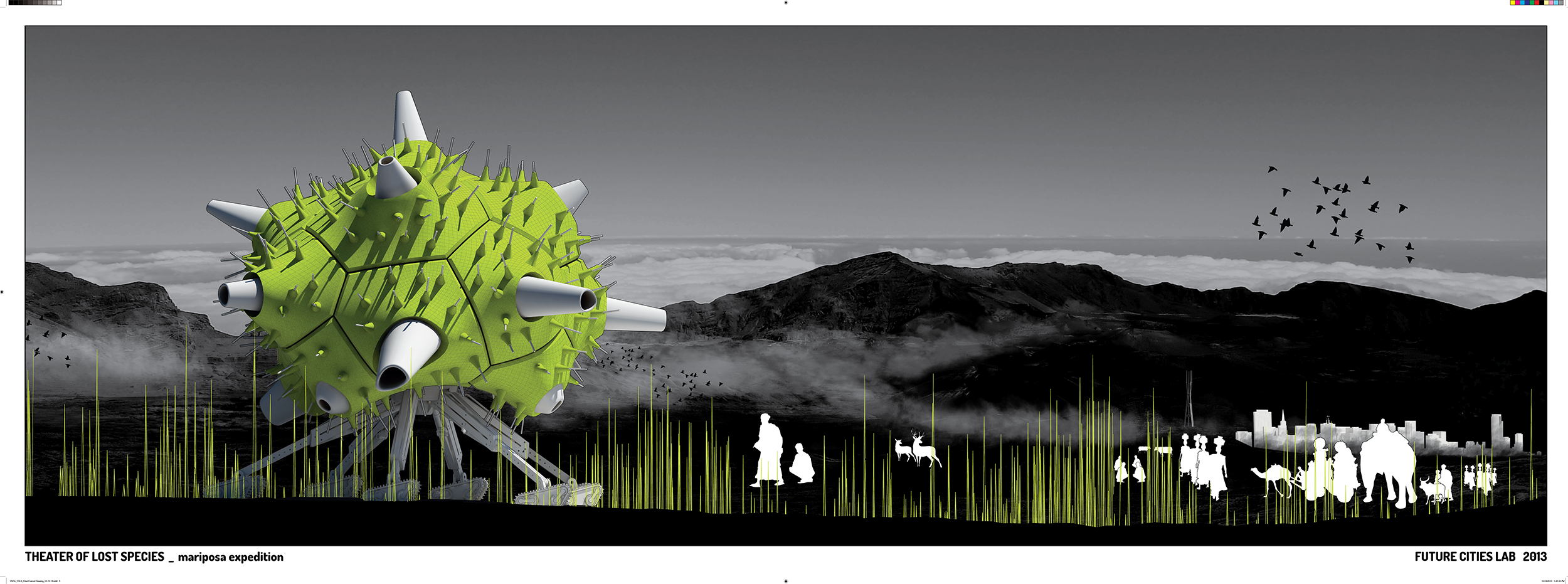
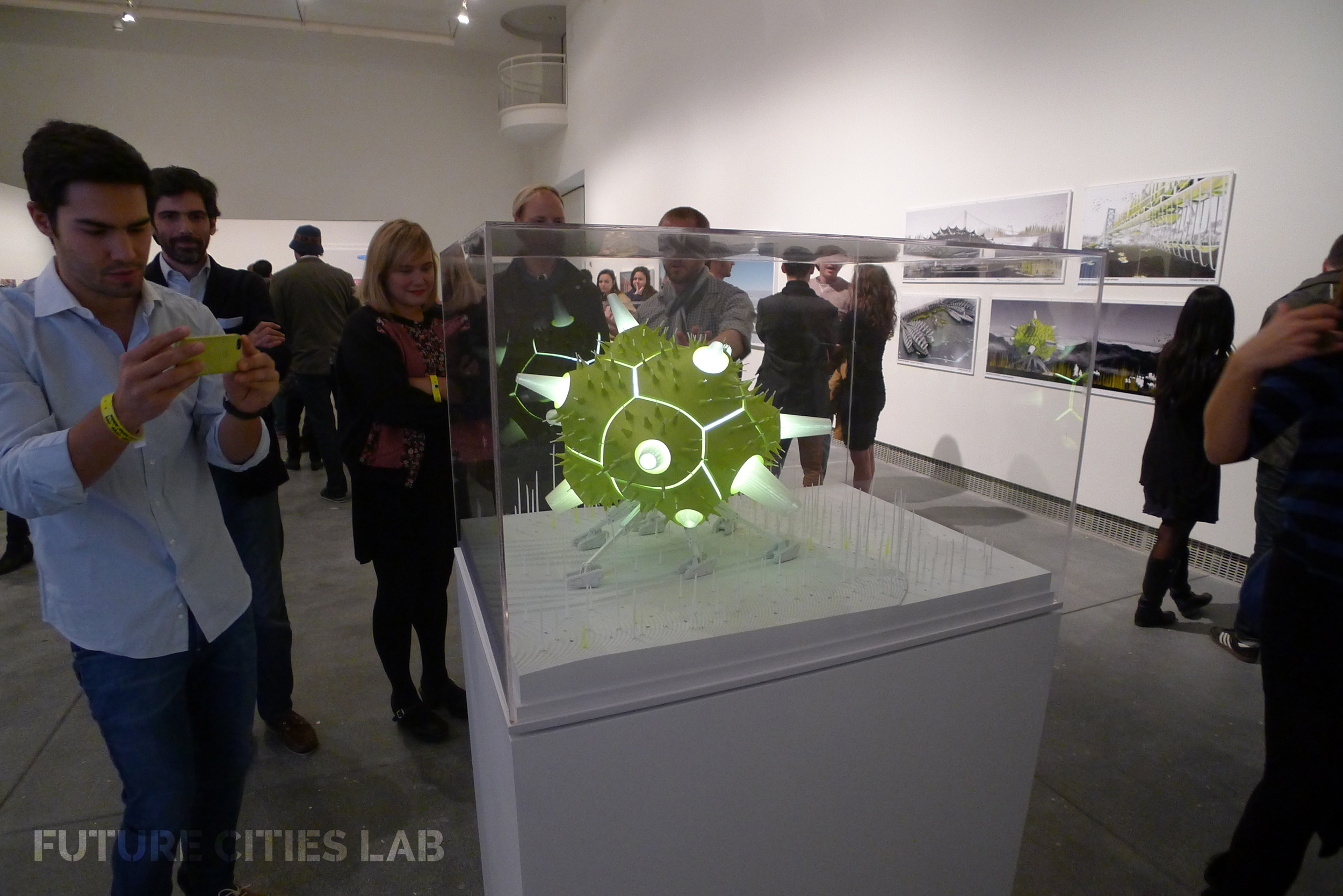



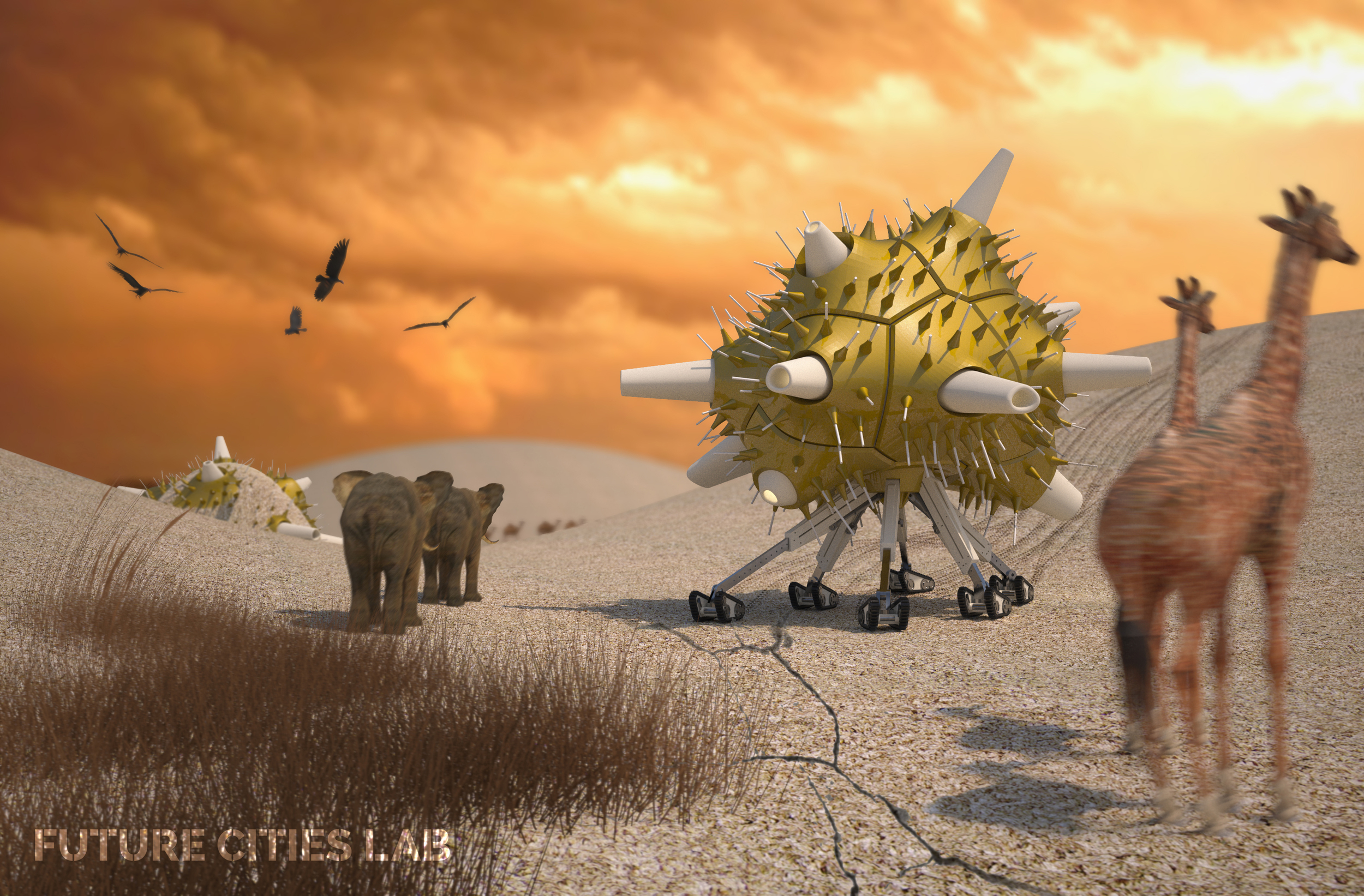
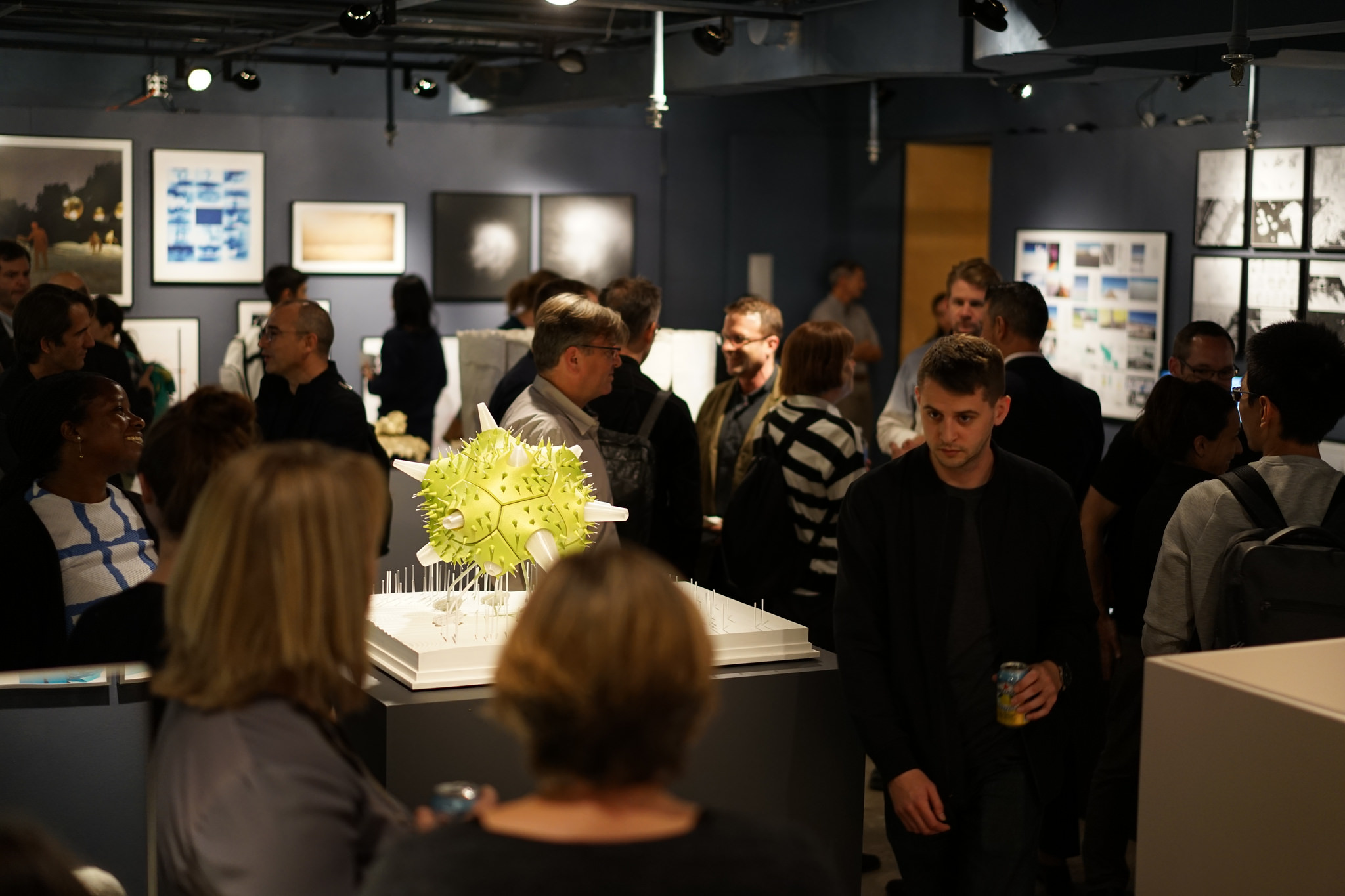

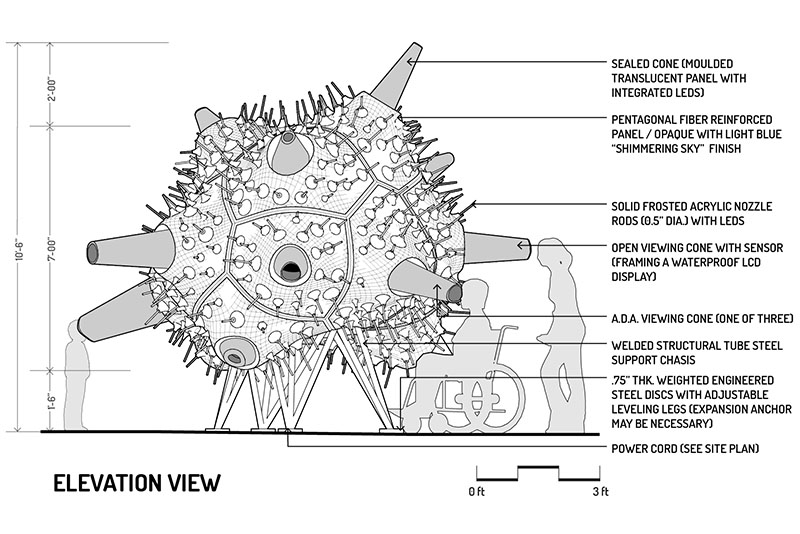

Theater of Lost Species
"People simply have no history of living in a world without an abundance of other animals in the wild. We have no precedent for it. Such a world will be new to the children who come after us; indeed, it will be alien. This planet will no longer be our old, familiar home, but something completely other. And that will change the character, the aesthetics, the ideals of our descendants, growing up on a globe that has almost in the blink of an eye been purged of its ancient evolutionary richness." -Lydia Millet (author) from her 9/12/12 NYT Op-Ed "The Child's Menagerie"
Check out some recent images from the Ambiguous Territories exhibition in Oct 2017.
Part virtual menagerie, part memory chamber, part urban spectacle: Visitors will be invited to view and interact with swarming digital sea creatures through large glowing viewing cones. Screens mounted at the end of the cones will display a curated virtual ecology of lost marine species. Sensors will allow these digital creatures to react to visitors, while slowly pulsating light rods create a dynamic and playful atmosphere at night.
Design: Future Cities Lab, San Francisco - Jason Kelly Johnson & Nataly Gattegno (Design Principals);
Team members: Ripon DeLeon (Senior Associate), Shawn Komlos (Intern).
Production Team: Ji Ahn, Fernando Amenedo
Fabrication: MACHINIC Digital Fabrication & Consulting, San Francisco
Scientific Collaborators: Matthew Clapham (UCSC); Dr. Jonathan Payne (Stanford University)


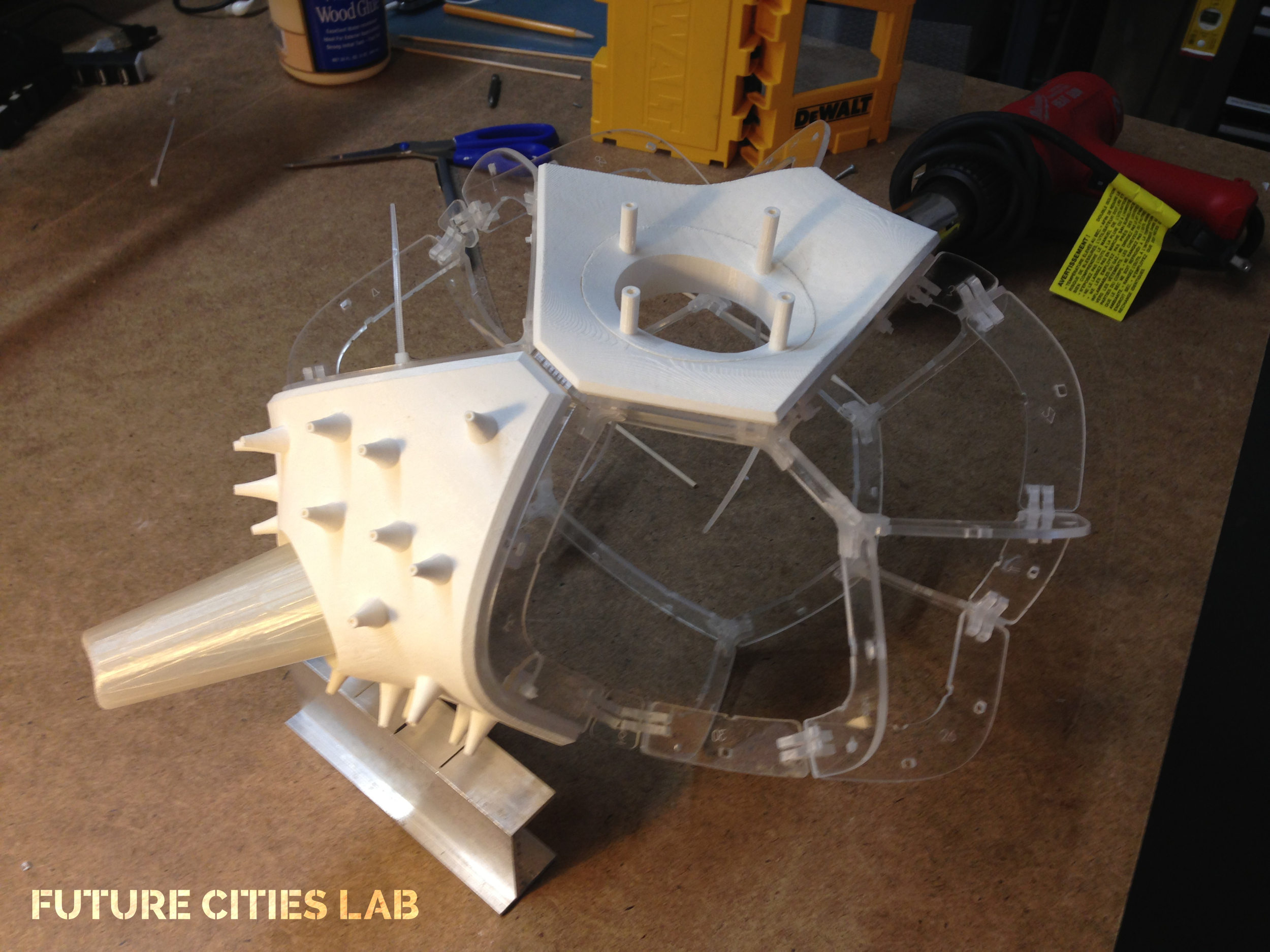

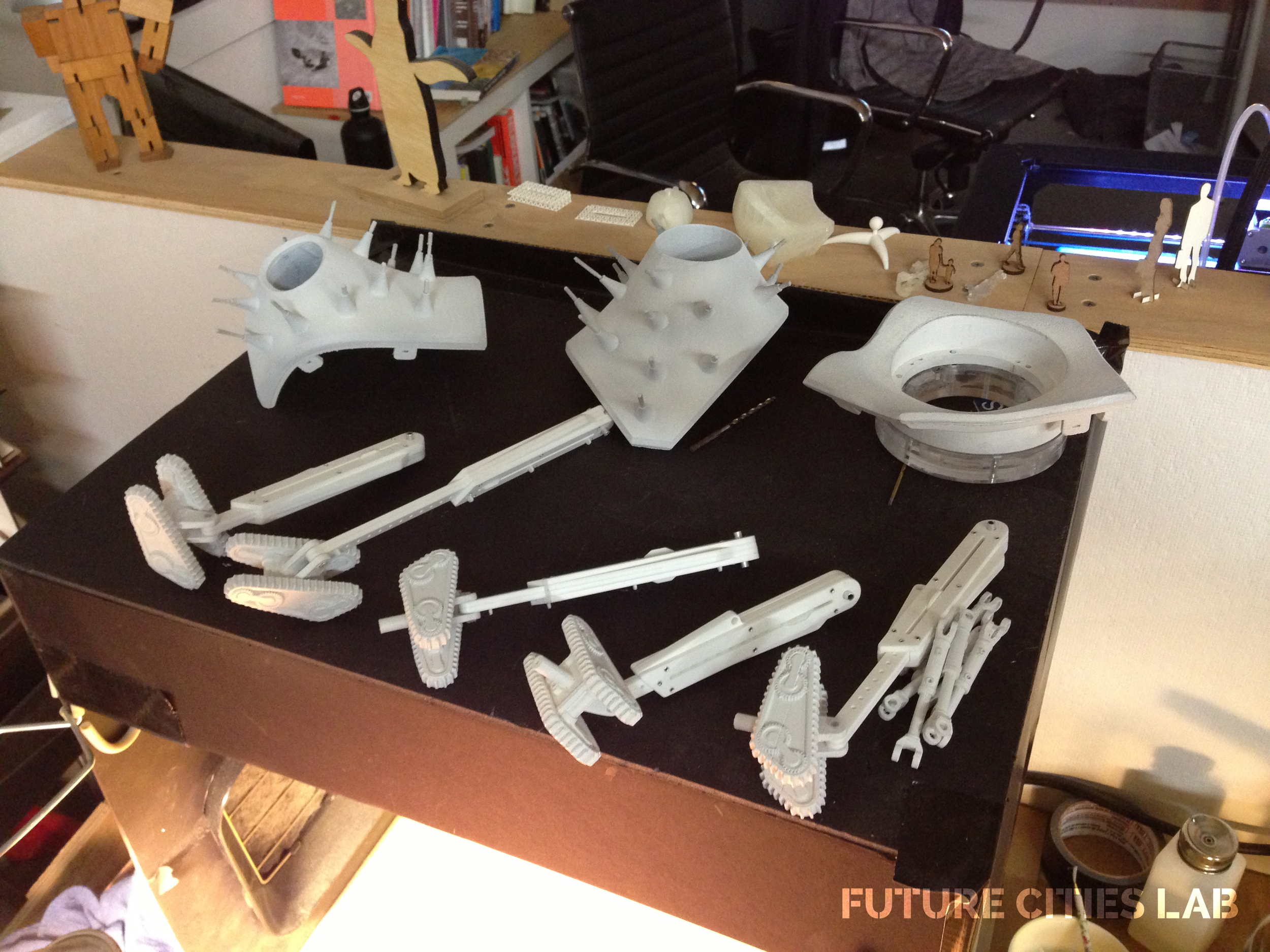

Links of Interest:
Theater of Lost Species- Pinterest (sampling of things/textures that inspired the design process)
The Child's Menagerie (NYT Article that helped to inspire the project by Lydia Millet, 08 Dec, 2012)
Life in the Sea Found Its Fate in a Paroxysm of Extinction (NYT Article about Clapham/Payne's Research)
FAQ - FREQUENTLY ASKED QUESTIONS:
1. What's the big idea?
The Theater of Lost Species is an object for collective celebration and mourning, a catalyst for conversation, philosophical debate and ecological engagement. It is a device for both viewing and interacting with a collection of fantastic, yet extinct, sea creatures. The project is inspired by a number of influences such as Traveling Menageries, Chinese Lanterns and portable Camera Obscura devices from the 1800's, Time Capsules from the 1950-60's and various recreations of Noah's Arc. An important tandem project are Seed Banks such as the on at Svalbard, Norway. After reading Lydia Millet's Op-Ed in the NYT "The Child's Menagerie" we began the process of conceptualizing and designing the Theater. We set out to address Millet's question:"Can you feel the loss of something you never knew in the first place?"
2. What will visitors see through the viewing cones? What will it look like at night?
The long viewing cones focus on digital display screens that are portals to a seamless virtual aquarium. Within the aquarium, digital sea creatures swarm to the viewing cones, engaging the subtle motion of viewers. In the evening the theater will glow and pulsate as the swarms slowly navigate within the virtual aquarium. We are developing a custom physcial-digital interface using the Processing programming language (connecting Arduino microcontrollers, Infrared (IR) Sensors and LEDs) allowing viewers to actively engage the virtual creatures. We have been inspired by projects like Soda Constructor, Oasis and Manifest (* these links will not work on iOS mobile devices).
3. How big is it and what will it be made out of?
The Theater has a footprint of approx. 16' x 16' and is 16' tall . It will be made out of lightweight Carbon Fiber Reinforced Panels (FRP) and resin. The 15 unique hexagonal panels will be made by Kreysler & Associates in the Bay Area. The glowing pins will be made out of translucent cast rods connected to super-bright LEDS. A custom steel chasis will connect all the pieces and will be bolted to the ground. The entire assembly will be protototyped at Future Cities Lab in the Dogpatch neighborhood of San Francisco.
4. How did you design and prototype this?
The Theater is being designed using Rhino and Grasshopper softwares with the Kangaroo and Firefly plug-ins. The interactive components are being programmed in Processing, Arduino, Python and Ruby. The physical components are being prototyped using a combination of laser cutting, cnc milling and 3d printing (we used a Makerbot Replicator 2 generously donated to us by Jake Lodwick from Elepath). Each viewing cone has three integrated IR sensors that allow the microcontrollers to sense visitors proximity which in turn activate the virtual swarm and glowing LEDs pins.
5. If I have more questions how do I contact you guys? How can I donate or sponsor the project?
You can contact us by e-mail at: info@future-cities-lab.net. We will begin fundraising efforts in late 2013.


